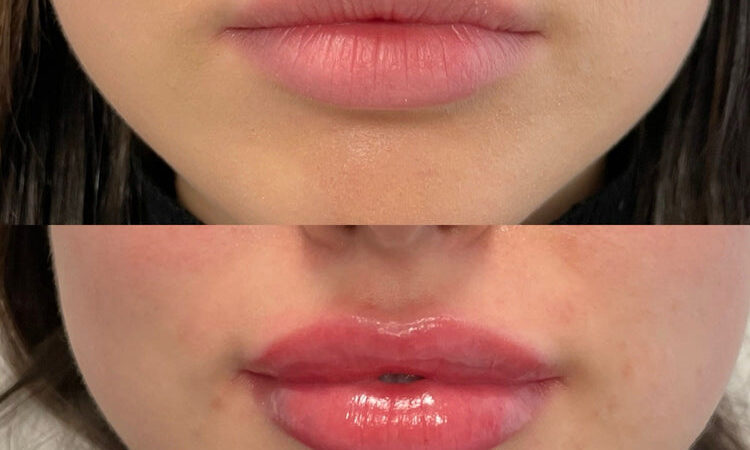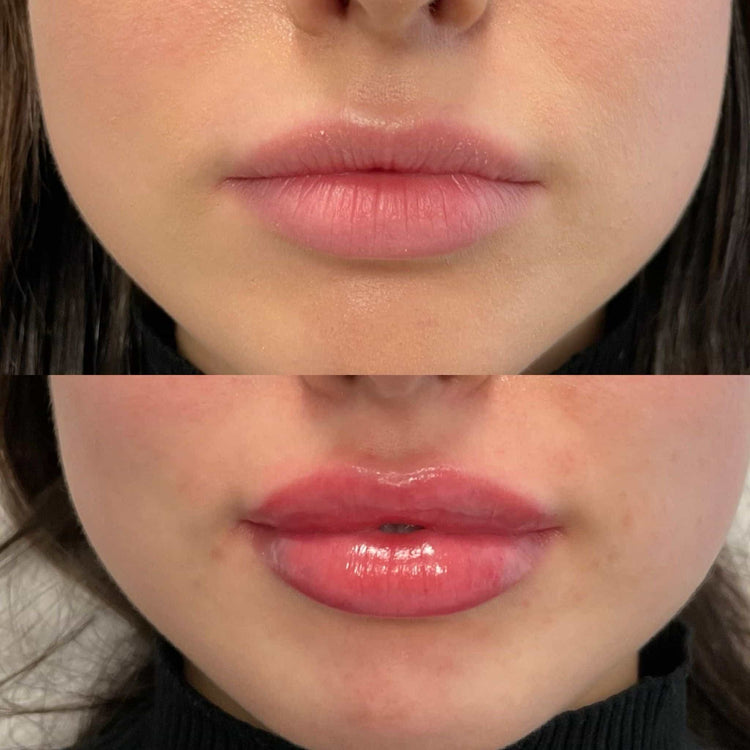How Dermal Fillers Support A Non-Surgical Skincare Approach

Composition and Function
Dermal fillers are injectable substances used to restore volume and fullness to the skin, smoothing out wrinkles, enhancing facial contours, and rejuvenating the appearance. They are composed of various materials, most commonly hyaluronic acid, which is a naturally occurring substance found in the body that attracts and retains moisture.
Hyaluronic acid fillers provide hydration and plumpness, effectively minimizing the appearance of fine lines, wrinkles, and folds. Other types of dermal fillers utilize substances like poly-L-lactic acid (PLLA) or calcium hydroxylapatite (CaHA). These materials stimulate collagen production, leading to long-lasting skin tightening and rejuvenation.
The use of dermal fillers allows for a non-surgical approach to skincare, offering a less invasive alternative to traditional surgical procedures. Their versatility makes them suitable for addressing a wide range of concerns, including wrinkles around the eyes (crow’s feet), nasolabial folds (smile lines), and loss of volume in the cheeks or lips.
Types of Dermal Fillers
Dermal fillers come in various types, each with unique properties and applications. Hyaluronic acid fillers are the most popular type, known for their ability to instantly hydrate and plump up the skin, reducing the appearance of fine lines and wrinkles.
Poly-L-lactic acid (PLLA) fillers stimulate collagen production over time, gradually improving skin texture and firmness. Calcium hydroxylapatite (CaHA) is another type that provides volume and structure, often used for enhancing cheekbones or contouring the jawline.
There are also fat grafting procedures where your own body fat is harvested and injected to add volume to specific areas.
Reducing Signs of Aging
Dermal fillers have become a popular choice for individuals seeking non-surgical ways to address signs of aging. These injectable substances work by restoring volume and fullness to the skin, smoothing wrinkles, and enhancing facial contours.
- Hyaluronic acid fillers are among the most commonly used types, providing immediate hydration and plumpness to diminish the appearance of fine lines and wrinkles.
- Poly-L-lactic acid (PLLA) fillers stimulate collagen production over time, resulting in a gradual improvement in skin texture and firmness.
- Calcium hydroxylapatite (CaHA) fillers are known for their ability to provide volume and structure, making them suitable for enhancing cheekbones or contouring the jawline.
Fine Lines and Wrinkles

Fine lines and wrinkles are a common sign of aging. They occur when the skin loses its elasticity and volume, causing the surface to crease and fold.
Dermal fillers offer a non-surgical solution to minimize the appearance of these fine lines and wrinkles. By injecting gel-like substances into the targeted areas, dermal fillers restore volume and plumpness to the skin, smoothing out the creases and creating a more youthful appearance.
Facial Volume Loss
Facial volume loss is a natural part of aging. As we age, our bodies produce less collagen and elastin, the proteins that keep our skin firm and elastic. This leads to a gradual loss of volume in the face, causing wrinkles, sagging, and a hollowed appearance.
- Loss of volume in the cheeks
- Nasolabial folds (smile lines) become deeper
- Thinning lips
- Receding jawline
Dermal fillers offer a way to counteract these changes. By injecting gel-like substances into the skin, they can restore volume and fullness, smoothing out wrinkles and enhancing facial contours.
Enhancing Facial Features

Dermal fillers are becoming increasingly popular as a non-surgical approach to skincare. They are injectable substances that work by restoring volume and fullness to the skin, effectively minimizing the appearance of wrinkles, folds, and sagging.
These fillers come in various types, each tailored for specific concerns. Hyaluronic acid fillers are known for their immediate plumping effect, hydrating the skin and smoothing out fine lines. Other types, like Poly-L-lactic acid (PLLA), stimulate collagen production over time, leading to long-lasting skin tightening and rejuvenation.
The versatility of dermal fillers makes them suitable for addressing a wide range of concerns, from subtle signs of aging to more prominent features such as wrinkles around the eyes (crow’s feet), nasolabial folds (smile lines), and loss of volume in the cheeks or lips.
Lip Enhancement
%h2% Lip Enhancement
Lip enhancement using dermal fillers is a popular non-surgical procedure to augment lip size, shape, and definition. Hyaluronic acid fillers are commonly used for this purpose as they can instantly add volume and fullness to the lips, creating a plumper, more youthful appearance.
The amount of filler injected depends on the individual’s desired outcome and natural lip structure. Fillers can be strategically placed to enhance the Cupid’s bow, increase lip volume, or correct asymmetry. The procedure typically takes about 30 minutes and involves minimal downtime.
Cheek Augmentation
%h2% Cheek Augmentation
Cheek augmentation with dermal fillers is a popular non-surgical procedure to enhance the fullness and definition of the cheeks, giving the face a more youthful and sculpted appearance. Hyaluronic acid fillers are commonly used for this purpose due to their ability to provide instant volume and hydration.
During the procedure, the filler is injected into specific areas of the cheeks to restore lost volume, lift sagging cheeks, and create a more prominent cheekbone structure. The amount of filler used depends on individual needs and desired results.
Cheek augmentation with dermal fillers offers several benefits, including:
- Non-surgical approach: It avoids the risks and recovery time associated with surgical procedures.
- Natural-looking results: Hyaluronic acid fillers integrate seamlessly with the skin, creating subtle yet noticeable enhancements.
- Reversible procedure: Fillers can be dissolved if desired or if any adverse reactions occur.
- Short downtime: Most individuals can return to their normal activities immediately after the procedure.
Jawline Definition
Jawline definition refers to the prominent line that runs along the lower border of the jaw. A well-defined jawline can create a more sculpted and youthful appearance.
Calcium hydroxylapatite (CaHA) fillers are particularly suitable for enhancing jawline definition. They provide volume and structure, helping to accentuate the jawline’s contour and create a sharper angle.
The filler is strategically injected along the jawline to lift and define its edge, resulting in a more prominent and defined appearance.
Consultation and Treatment Plan
%h2% Consultation and Treatment Plan
Before undergoing any dermal filler treatment, it is essential to have a thorough consultation with a qualified and experienced medical professional.
During the consultation, the practitioner will assess your individual needs, discuss your desired outcomes, and evaluate your medical history. They will also address any concerns you may have about the procedure.
Based on the consultation, a personalized treatment plan will be developed. This plan will outline the type of filler to be used, the amount to be injected, and the specific areas of the face that will be treated.
The practitioner will explain the procedure in detail, including any potential risks or side effects. They will also provide instructions on how to prepare for the treatment and what to expect during and after the procedure.
Procedure Process
Dermal fillers are injectable substances used to restore volume and fullness to the skin, smoothing out wrinkles, enhancing facial contours, and rejuvenating the appearance.
They are composed of various materials, most commonly hyaluronic acid, which is a naturally occurring substance found in the body that attracts and retains moisture.
- Hyaluronic acid fillers provide hydration and plumpness, effectively minimizing the appearance of fine lines, wrinkles, and folds.
- Other types of dermal fillers utilize substances like poly-L-lactic acid (PLLA) or calcium hydroxylapatite (CaHA). These materials stimulate collagen production, leading to long-lasting skin tightening and rejuvenation.
Dermal fillers allow for a non-surgical approach to skincare, offering a less invasive alternative to traditional surgical procedures. Their versatility makes them suitable for addressing a wide range of concerns, including wrinkles around the eyes (crow’s feet), nasolabial folds (smile lines), and loss of volume in the cheeks or lips.
- Hyaluronic acid fillers are among the most commonly used types, providing immediate hydration and plumpness to diminish the appearance of fine lines and wrinkles.
- Poly-L-lactic acid (PLLA) fillers stimulate collagen production over time, resulting in a gradual improvement in skin texture and firmness.
- Calcium hydroxylapatite (CaHA) fillers are known for their ability to provide volume and structure, making them suitable for enhancing cheekbones or contouring the jawline.
Dermal fillers have become an increasingly popular choice for individuals seeking non-surgical ways to address signs of aging.
%h2% Lip Enhancement
Lip enhancement using dermal fillers is a popular non-surgical procedure to augment lip size, shape, and definition. Hyaluronic acid fillers are commonly used for this purpose as they can instantly add volume and fullness to the lips, creating a plumper, more youthful appearance.
%h2% Cheek Augmentation
Cheek augmentation with dermal fillers is a popular non-surgical procedure to enhance the fullness and definition of the cheeks, giving the face a more youthful and sculpted appearance. Hyaluronic acid fillers are commonly used for this purpose due to their ability to provide instant volume and hydration.
During the procedure, the filler is injected into specific areas of the cheeks to restore lost volume, lift sagging cheeks, and create a more prominent cheekbone structure.
Cheek augmentation with dermal fillers offers several benefits:
- Non-surgical approach: It avoids the risks and recovery time associated with surgical procedures.
- Natural-looking results: Hyaluronic acid fillers integrate seamlessly with the skin, creating subtle yet noticeable enhancements.
- Reversible procedure: Fillers can be dissolved if desired or if any adverse reactions occur.
- Short downtime: Most individuals can return to their normal activities immediately after the procedure.
Jawline definition refers to the prominent line that runs along the lower border of the jaw. A well-defined jawline can create a more sculpted and youthful appearance.
Calcium hydroxylapatite (CaHA) fillers are particularly suitable for enhancing jawline definition. They provide volume and structure, helping to accentuate the jawline’s contour and create a sharper angle.
The filler is strategically injected along the jawline to lift and define its edge, resulting in a more prominent and defined appearance.
%h2% Consultation and Treatment Plan
Before undergoing any dermal filler treatment, it is essential to have a thorough consultation with a qualified and experienced medical professional.
During the consultation, the practitioner will assess your individual needs, discuss your desired outcomes, and evaluate your medical history. They will also address any concerns you may have about the procedure.
Based on the consultation, a personalized treatment plan will be developed. This plan will outline the type of filler to be used, the amount to be injected, and the specific areas of the face that will be treated.
The practitioner will explain the procedure in detail, including any potential risks or side effects. They will also provide instructions on how to prepare for the treatment and what to expect during and after the procedure.
Aftercare Instructions
## Aftercare Instructions
Following your dermal filler treatment, it is important to follow these aftercare instructions to ensure optimal results and minimize the risk of complications:
* **Avoid touching or massaging the treated area.** Allow the fillers to settle properly. Avoid touching or rubbing the injection sites for at least 24 hours. This will help prevent bruising or swelling from worsening.
* **Apply ice packs.** Applying ice packs for 10-15 minutes at a time, several times a day, can help reduce swelling and inflammation.
* **Keep your head elevated.** Sleeping with your head elevated can also help minimize swelling.
* **Do not engage in strenuous activities.** Avoid intense exercise or any activity that may increase blood flow to the treated area for at least 48 hours.
* **Avoid alcohol consumption.** Alcohol can thin your blood and increase the risk of bruising.
* **Discontinue the use of blood-thinning medications.** If you are taking aspirin or other blood-thinning medications, consult with your practitioner about stopping them before the procedure.
If you experience any unusual symptoms such as excessive pain, redness, swelling, or discharge, contact your practitioner immediately.
Common Side Effects
Like all medical procedures, dermal filler treatments can have some side effects. These are typically mild and temporary, resolving within a few days to a week.
- Bruising: This is one of the most common side effects, usually appearing around the injection site and subsiding within a week or two.
- Swelling: Some swelling at the injection site is normal and typically reduces within a few days.
- Redness: Mild redness may appear around the injection sites, but it usually fades within a day or two.
- Pain or Tenderness: Some mild pain or tenderness at the injection site can occur, which can be managed with over-the-counter pain relievers.
Potential Complications
While dermal fillers are generally safe and effective, there are potential complications associated with their use.
- Infection: As with any procedure involving needles, there is a risk of infection. Maintaining good hygiene practices and following your practitioner’s instructions for post-treatment care can help minimize this risk.
- Allergic Reaction: Some individuals may be allergic to the ingredients in dermal fillers. It’s crucial to discuss your medical history with your practitioner, including any allergies you have, before undergoing treatment.
- Granuloma Formation: A granuloma is a small, raised lump that can form at the injection site as the body reacts to the filler material. This usually resolves on its own but may require further treatment.
- Asymmetry or Uneven Results:** It is important to choose an experienced and qualified practitioner who understands facial anatomy and filler techniques to minimize the risk of asymmetry.
- Migration of Filler: In rare cases, dermal fillers can migrate from the injection site, causing lumps or bumps in unintended areas.
Choosing a Qualified Practitioner
Choosing a qualified practitioner is essential when considering dermal fillers. Look for someone who has extensive experience with facial injectables, understands anatomy, and uses safe techniques.
Ask about their qualifications, training, and experience with the specific type of filler you’re interested in. Don’t hesitate to ask for before-and-after photos from previous patients to assess their aesthetic style and ensure it aligns with your desired outcome. It’s important to feel comfortable and confident in your practitioner’s abilities.
Discover the benefits of dermal fillers at It’s Me & You Clinic with Dr. Laura Geige
- How Dermal Fillers Support A Non-Surgical Skincare Approach - May 10, 2025
- Brow Lift Treatment Near Surbiton, Surrey - May 9, 2025
- Does THC Soda Have Any Side Effects? - May 9, 2025
